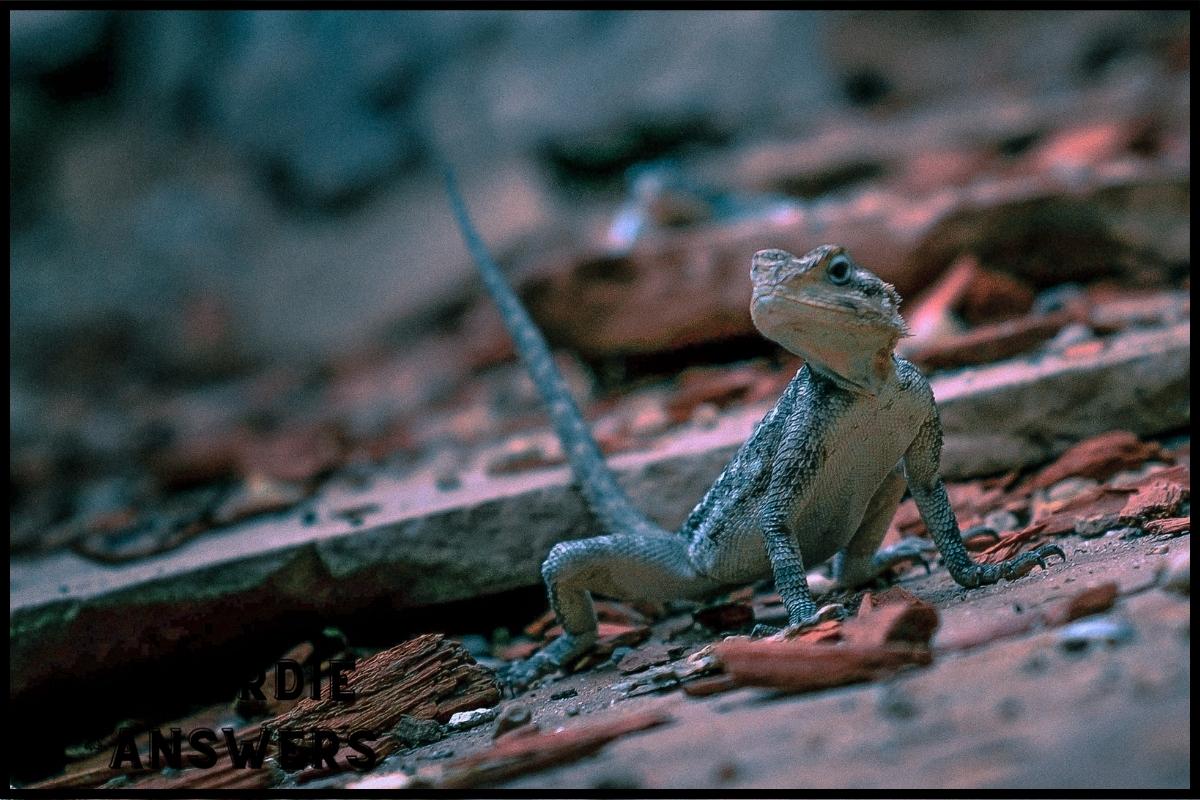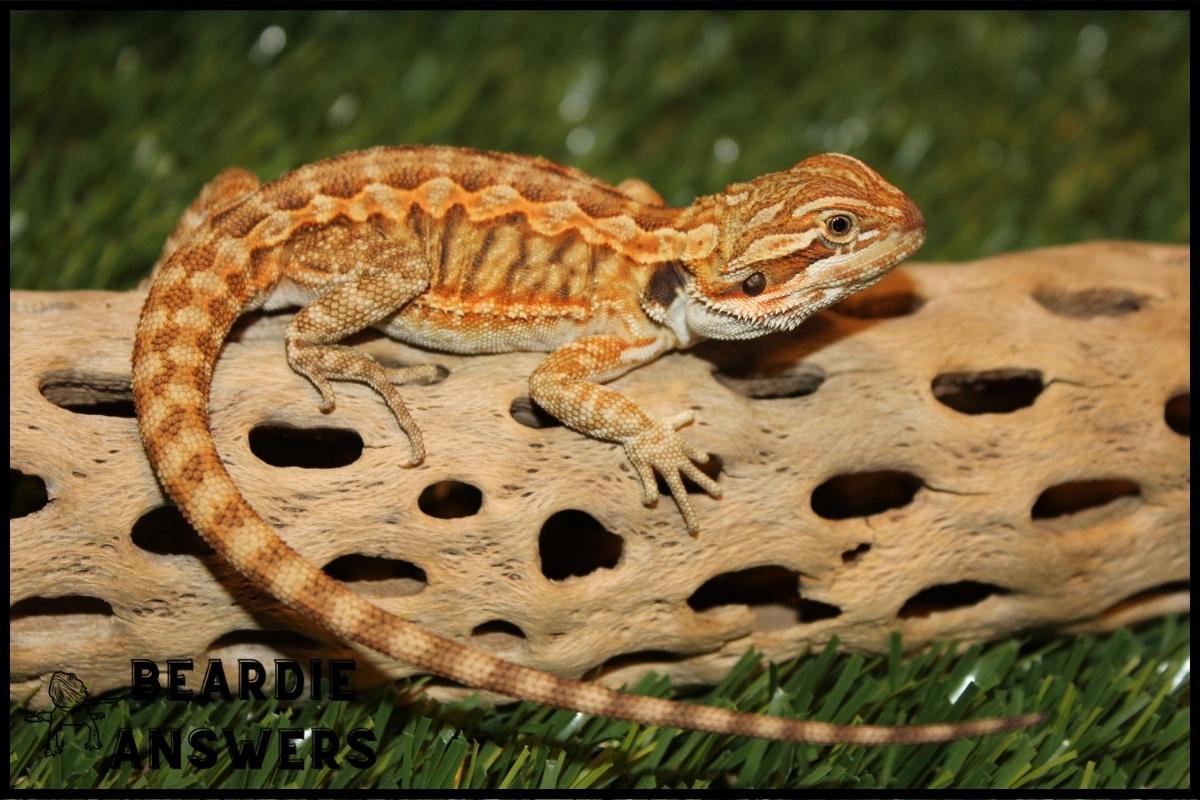There may be a reason why your bearded dragon is constantly trying to get out. They may feel stressed due to a small enclosure, curious about what’s out there, feel threatened or in danger, or may even be trying to find a new mate!
No matter the reason, it is important to recognize the signs of a stressed bearded dragon so you can make sure that your pet feels safe and secure in its cage.
What You'll Learn
Reasons Your Bearded Dragon Wants Out
Feeling Stressed Due To A Small Enclosure
Make sure the enclosure your bearded dragon inhabits is the right size. If it is too small, this can cause your beardie to feel stressed and anxious. As a result, your bearded dragon might try to escape its cage.
Signs of stress due to a small enclosure include dark markings on its belly and chin, bobbing obsessively, glass surfing, and hiding from the light.
Curious About What’s Out There
It is no surprise that bearded dragons are curious about the world outside of their enclosure. As wild animals, they are used to exploring their environment and may become bored with the same enclosure day after day.
They may be tempted to investigate what’s beyond the glass walls of their enclosure and may try to get out to explore.
Feeling Threatened And Trying To Escape Danger
It’s not just curiosity or boredom that can cause a bearded dragon to want to escape their tank. It can also be a sign that they feel threatened by something. If your bearded dragon is hissing and bobbing its head, this is the first warning sign that it may be feeling threatened.
Trying To Find A Mate
If you think that your bearded dragon is trying to escape their cage to find a mate, it’s important to pay attention to its behavior.
Male bearded dragons may puff up their beards and start bobbing their heads when they encounter a female in the wild. If your beardie is displaying similar behavior, it may be looking for a mate.
These behaviors are most prevalent during the breeding season, which occurs from November to March.
Signs Of A Stressed Bearded Dragon
Bearded dragons will often try to escape their enclosure if they’re feeling stressed. This could be caused by a number of environmental factors, such as a small enclosure, an unsuitable temperature, or a lack of stimulation.
Changes in Behavior
Bearded dragons may exhibit changes in behavior when they are feeling stressed.
Glass surfing is a common behavior in bearded dragons when they feel that they are in an unfamiliar environment or are trying to escape something they perceive to be a danger.
This behavior usually manifests as the bearded dragon clawing at the glass and darting around the enclosure as if they’re trying to climb out.
Bobbing their heads is a sign of dominance, which can be caused by stress or a sense of threat.
Keeping an eye out for any of these behaviors can be a great way to identify if your bearded dragon is feeling distressed.
Decreased Appetite
If your bearded dragon isn’t eating, check the temperature of their enclosure and make sure it’s in the optimal range. You should also make sure that there is adequate humidity and lighting available.
Once the environment is suitable, you can offer different types of food to encourage them to eat.
Hiding or Digging
Digging accompanied by lethargy can be a sign that your dragon is ready to go into brumation. However, it can also be a sign of stress. If your bearded dragon is excessively digging, look for dark markings on its belly and chin. These marks are a sure indication of stress.
It’s common for beardies to hide when they are stressed, so digging may be their way of trying to hide.
Ways To Make Your Bearded Dragon Comfortable In Their Cage
Making sure your bearded dragon feels safe and secure in their enclosure is key to their overall wellbeing. Taking the time and effort to create a stimulating environment and provide the right temperature and plenty of hiding spots are just a few things you can do to make your beardie feel more comfortable.
Provide the Right Temperature
Maintaining a comfortable and healthy temperature for your bearded dragon is essential.
Juvenile bearded dragons require similar temperatures as a baby, with the basking area ranging from 95 to 105 degrees F and the cooler area ranging from 70 to 80 degrees F.
Too hot or too cold and your dragon could become stressed, leading to changes in behavior and decreased appetite.
You can reduce your beardies reaction to sensory inputs (such as spectators) by covering the tank with a towel or getting a good heating and cooling system.
Keep a temperature gun handy and hang a thermometer near the basking spot so you can monitor the temperature.
With the right environment, your bearded dragon will feel safe and secure in its habitat, allowing it to explore and be happy without trying to escape!
Create a Stimulating Environment
Creating a stimulating environment for your bearded dragon is one of the most important steps to ensuring they feel comfortable in their enclosure.
Bearded dragons are naturally curious animals and need to explore different textures, surfaces, and spaces. To meet this need, make sure to provide plenty of items to help them explore, such as rocks, logs, branches, and live plants. You can also offer toys such as balls, tunnels, and climbing structures.
This will give them plenty of opportunity to exercise and explore their surroundings which will help reduce stress and boredom.
Provide Plenty of Hiding Spots
Bearded dragons need a safe and secure environment to feel at ease. Providing plenty of hiding spots can help them to feel comfortable and secure.
Hiding spots can be as simple as a cave or box, or as elaborate as a rock formation with many crevices. The hiding spot should be big enough for the bearded dragon to curl up in, and provide plenty of ventilation.
Bearded dragons love exploring and climbing, so adding branches and rocks can also stimulate their curiosity and give them a place to explore safely.
Provide Regular Handling and Care
Regular handling and care is an important part of keeping your bearded dragon comfortable in its cage.
Taking your beardie out for short excursions outside of the cage is an easy way to give it some stimulation and provide a break from its enclosure. Be sure to keep a close eye on your pet and never leave it unsupervised.
A warm bath can also be beneficial but only if your beardie is already comfortable with handling. If it’s not, then it will cause more stress and anxiety.
Key Points
- Bearded dragons may try to escape their enclosure if they feel stressed due to a small enclosure, feel curious about the outside world, feel threatened, or are looking for a mate.
- Signs of stress include dark markings on the belly and chin, glass surfing, hiding from the light, bobbing their head, and decreased appetite.
- To prevent stress, make sure the enclosure is the right size, provide a stimulating environment, and maintain appropriate temperature and humidity levels.
- To make the dragon comfortable, provide hiding spots and ensure they have access to their basking spot.
- Regularly monitor your dragon’s behavior and look out for signs of stress to ensure they are comfortable and happy in their enclosure.

Hi! My name is Bryan, I am the “one behind the words” here are BeardieAnswers.com. I believe that providing quality care and nutrition is the best way to ensure the health of your pet. Every beardie is special and deserves the best care and attention. If you have questions about your bearded dragon, please don’t hesitate to ask! View My Full Author Page




